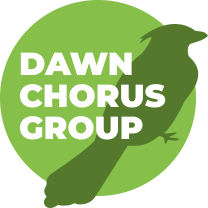Guest post by our incredible friend and colleague, Kalie Wertz. Read all about her on our About page!
“Numbers lend an air of legitimacy and credibility” – and yet, social capital has no true means of measurement. This couldn’t be closer to the truth. And this truth has often frustrated me as a management researcher, who often is aligned with concepts of human and social capital, and often takes a qualitative perspective to the work. Often in the eyes of quantitative scholars, I’m looked down upon because I don’t have concrete numbers or measurements that bring me closer to being able to precisely synthesize a phenomenon in one sentence. I would argue that it is part of human nature: we love categorizing but there simply aren’t ways to categorize everything – the world is simply too messy.
But numbers mean legitimacy, legitimacy means trust, and trust means behavior change, right?

Before going any further, I think it’s helpful to define human and social capital because there is often a lack of complete understanding of what the terms mean and should be referred to. I typically take a more broad approach to the definition, considering there have been many attempts are narrowing it down and focus on the relationships that end up having some sort of benefits (financial, network, otherwise). We can pile up social capital and use it in various ways, but it will rarely become anything we can tangibly show others. For example, I might have close relationships with every single valet at the restaurants I customarily visit, and therefore they don’t charge me the valet fee (which then entices me to give a bigger tip, and them to continue to do so). This relationship of knowing these valet is useful for me – I don’t get charged the valet fee – and likely comes with other sorts of extra treatment, because the valets can more accurately predict their potential tip from me. I have social capital in the form of knowing the valets, and it pays off (literally) for me, and also for them. This type of social capital in the form of networks and relationships shows up often, and often has financial ties such as this one, although it is more than just having money itself. Therefore, I love the idea of Endogenous Growth Theory, that human capital is core to economic growth. This gives me a feeling of status and importance and increases my potential legitimacy (doesn’t it?)
The question of measurement
But this then continues to raise the question of measurement. How do you measure a relationship, and, importantly, how can you measure that social capital “works” or pays off in some way? The question of why something works when something else does not is a classic conundrum – even all the market research in the world cannot accurately predict 100% of the time if some product, service, or otherwise will be successful. Further, through social networks, why do some people “go viral” while others do not, with seemingly the same content? Predictions have been made, and researchers have attempted to get closer to an answer, with some good theories also explored by the StaaS author, broken down into two paths of social capital and utility.
At the crux of social capital and utility, creating quality and/or valuable content is certainly part of the game plan to “viral”bility. The content – whether it be photos on Instagram, videos on TikTok, updates on Twitter, and whatever else happens these days on Facebook – needs to be “worth” something. But this, understandably, has many inherent flaws. One person’s brunch photo is another person’s trash (or so the saying goes). Value is not universal, and certainly, neither is quality.
Overall, people like to see that some work was put into the content, but more work does not equal more likes, retweets, comments, or followers – and therefore not more social capital. But we also love the challenge of chasing status, through fame and the exclusivity that comes with it. We love to think that if we put enough effort into something, the fame will come. It doesn’t always work out just that way.
So then begs the second question of whether that really matters, or if another form of social capital can still be found without reaching thousands of likes, comments, and followers. Are there other metrics we can focus on instead, rather than aiming for fame/status through whatever arbitrary engagement metric the platforms have created? Said another way, can we find value in something else?
In relation to the work I’ve connected with through the Dawn Chorus Group, our focus is less on how to ensure the platforms themselves are providing the best possible utility and social capital to folks (these corporations have too much focus on them anyway), but rather have a look into the inner-workings of the users. How can we draw insights into what people are thinking / feeling / ruminating on at the moment? How does that then affect different communities’ ability to change local, regional, and national behavior for the better? With this devotion to immense social capital in order to “win” at that status game on social media, nonprofits and community-driven organizations are often at a loss because they don’t feel the need to achieve a high status, and are ultimately unsure about what they will get them in the long run. Sure, there is potential for more followers or more likes to end up equaling more volunteers or more donors (the measurements actually needed by nonprofits), but the engagement online doesn’t always translate to offline work, despite the tools put in place to make it easier (donate buttons, automatically linking your credit cards, etc).
Finding Opportunities
So how can community organizations continue to put out quality and valuable content (based on the updates and information they already have at their disposal and also want to share out) with minimal effort to maximize their reach? This, of course, is the same age-old question of how we can try to find “viral”bility without actually trying too hard. How can we play a game without having fully and wholly committed to the game and reaching the status within the game?
As we look at these platforms and realize what they are really doing to us – finding new and rather clever ways to game us against each other, in our never-ending reach for fame and any promised fortune that goes along with it – it is valuable to reflect upon whether how we are being measured is worth it, and what other opportunities there might be. What opportunities are there for a local community center with 80 followers on Instagram to share more about what they are doing, and find volunteers to help with their programs? And how do we go about measuring that “value” rather than through likes and shares? While it can be argued that that is the best measurement, I often feel that it is not.
Measuring social capital is messy – always has been, and I imagine always will be. Because humans are messy, and can’t always be quantified.
But that’s not to say there isn’t value in these platforms. These data points are valuable and can shed new insights that we can triangulate with other data to better understand our world. And however close to predictive we might feel as if we can get, there are always failures that couldn’t have been predicted or successes no one saw coming. With that, we’ll keep working away at the data, hoping to find something ever closer to the truth.

